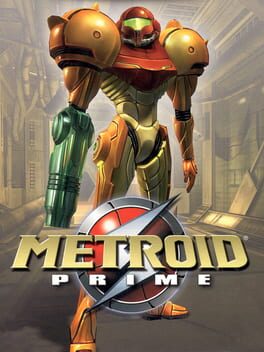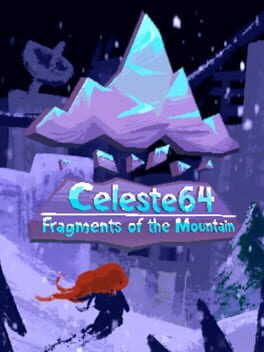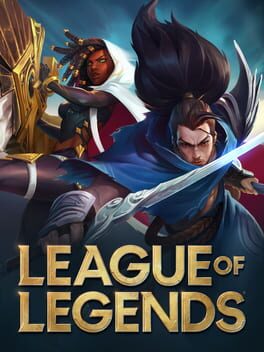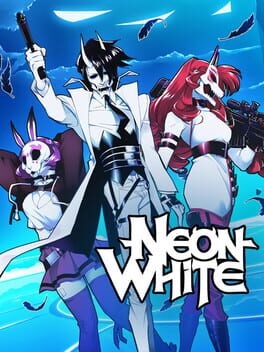maximilyun
2002
This review contains spoilers
When playing Metroid Prime, I found myself not only curious about its world and mechanics, but I found myself curious about our world. It's the kind of game that inspires me to learn more. There are some intense moments and some cinematic moments, but some of the best moments in the story exist in the fallout of that tension - clearing out a room of Space Pirates and spending time in silence reading their research logs, understanding more and more about them. On the complete opposite side of this example, loved returning to to the Chozo Ruins, being able to explore more of its catacombs and finding more writings the Chozo civilisation left behind in their struggle. How the story is being told, is just as important as the story being told.
The scan visor is a smart way to get you to learn about the world. Through it, you learn more about the creatures you’ll face in battle, swapping beams and visors to get a better hold of many combat encounters. You learn about how you can destroy and traverse the world, and you can read scripts left behind by the two dominating races on the planet of Tallon IV. The combat isn’t particularly deep, but the visors and beams give each encounter a unique quirk. When using the wave beam against the final boss, I found myself acting more acrobatically to weave around its attacks, due to the wave beam’s homing properties. In other encounters, the wave beam made me act more aggressively, because it stuns smaller enemies. The other three beams have this same kind of situational variety. At the bare minimum, for the more superfluous applications of each beam and each visor, they add that kind of frenzied panic to the combat which I appreciated a lot in Super Metroid. The scan visor often contextualizes how you’ll be using each beam/visor. Sometimes you’ll reason out to use certain beams against certain enemies, like the plasma beam against ice enemies. Other times, the scan visor will aid you in understanding what beams, visors, and by extension, strategies, to use.
Mechanically, the world is a pretty good translation of the 2D Metroid formula. Get an upgrade, find the path the game’s unseen hand is guiding you towards, repeat - with a few optional upgrades and artifacts to find for observant or replaying players. The last half of the game challenged me into thinking critically - I found it very fun to plan my route on the fly to maximize the amount of upgrades and artifacts I could find in the shortest amount of time possible. I think because of the third dimension, Prime can’t get away with as many well kept secrets as its 2D siblings, without them being impossible to find. Thankfully, I find that there are a lot more puzzles and activities that test your spatial awareness - even then, they can be a little simplistic and boring. In a game with a literal added dimension to it, the hint system is a welcome addition, and an even more welcome addition is being able to disable it. The physical world isn’t the most interesting visually or mechanically, but it has some fantastic setpieces, and uses Samus’ available movement well. Samus’ main visor, the one you’ll have equipped for most of the game, has a lot of impressive details to it, further grounding the user interface and “video-game-y” mechanics into the world’s canon, which I appreciate.
Metroid Prime, for me, more than anything, is about the environment and knowledge, and life. Every facet of it feels deliberate, and in service of its greater experience. The Space Pirates are insistent on their believed place in the hierarchy of the cosmos, taking all that they can from the Metroid Prime, augmenting themselves beyond health and sentience. Then, the Metroid Prime, subtextually, represents not a poison, but knowledge itself. Knowledge the Chozo knew to keep at bay, and knowledge the Space Pirates believed they could harness. Samus then, is a kind of succession, who drives away the last sentient beings from Tallon IV, and kills the memory of the knowledge they tried to control, like an empty earth burying the last remaining memory of a nuclear war that wiped out humanity - nuclear energy and waste, comparisons I think are inevitable to Phazon.
There’s a lot more to think about when it comes to Metroid Prime’s story. I think its told organically and does a wonderful job of building tension in the game’s narrative. I think it’s very thought provoking.
I think everything about it is great! The gameplay is not slacking by any means but the story truly elevates it. What I see as its overarching theme, it succeeds at conveying - delivering one of the most focused and immersive games I have had the pleasure to learn more about.
The scan visor is a smart way to get you to learn about the world. Through it, you learn more about the creatures you’ll face in battle, swapping beams and visors to get a better hold of many combat encounters. You learn about how you can destroy and traverse the world, and you can read scripts left behind by the two dominating races on the planet of Tallon IV. The combat isn’t particularly deep, but the visors and beams give each encounter a unique quirk. When using the wave beam against the final boss, I found myself acting more acrobatically to weave around its attacks, due to the wave beam’s homing properties. In other encounters, the wave beam made me act more aggressively, because it stuns smaller enemies. The other three beams have this same kind of situational variety. At the bare minimum, for the more superfluous applications of each beam and each visor, they add that kind of frenzied panic to the combat which I appreciated a lot in Super Metroid. The scan visor often contextualizes how you’ll be using each beam/visor. Sometimes you’ll reason out to use certain beams against certain enemies, like the plasma beam against ice enemies. Other times, the scan visor will aid you in understanding what beams, visors, and by extension, strategies, to use.
Mechanically, the world is a pretty good translation of the 2D Metroid formula. Get an upgrade, find the path the game’s unseen hand is guiding you towards, repeat - with a few optional upgrades and artifacts to find for observant or replaying players. The last half of the game challenged me into thinking critically - I found it very fun to plan my route on the fly to maximize the amount of upgrades and artifacts I could find in the shortest amount of time possible. I think because of the third dimension, Prime can’t get away with as many well kept secrets as its 2D siblings, without them being impossible to find. Thankfully, I find that there are a lot more puzzles and activities that test your spatial awareness - even then, they can be a little simplistic and boring. In a game with a literal added dimension to it, the hint system is a welcome addition, and an even more welcome addition is being able to disable it. The physical world isn’t the most interesting visually or mechanically, but it has some fantastic setpieces, and uses Samus’ available movement well. Samus’ main visor, the one you’ll have equipped for most of the game, has a lot of impressive details to it, further grounding the user interface and “video-game-y” mechanics into the world’s canon, which I appreciate.
Metroid Prime, for me, more than anything, is about the environment and knowledge, and life. Every facet of it feels deliberate, and in service of its greater experience. The Space Pirates are insistent on their believed place in the hierarchy of the cosmos, taking all that they can from the Metroid Prime, augmenting themselves beyond health and sentience. Then, the Metroid Prime, subtextually, represents not a poison, but knowledge itself. Knowledge the Chozo knew to keep at bay, and knowledge the Space Pirates believed they could harness. Samus then, is a kind of succession, who drives away the last sentient beings from Tallon IV, and kills the memory of the knowledge they tried to control, like an empty earth burying the last remaining memory of a nuclear war that wiped out humanity - nuclear energy and waste, comparisons I think are inevitable to Phazon.
There’s a lot more to think about when it comes to Metroid Prime’s story. I think its told organically and does a wonderful job of building tension in the game’s narrative. I think it’s very thought provoking.
I think everything about it is great! The gameplay is not slacking by any means but the story truly elevates it. What I see as its overarching theme, it succeeds at conveying - delivering one of the most focused and immersive games I have had the pleasure to learn more about.
1986
Much of Metroid is fascinating, but it is AGONIZING to play. I lamented Metroid: Zero Mission for the simple fact that it didn’t capture the essence of the original Metroid nor did it lean into its unique action-oriented tone enough. I’ve played the original on and off, and this time, I used a guide and minimal rewinding to get to the end. There are several things in Metroid that made me unable to breathe properly. Now that I’ve played it all the way through, I feel sheer relief.
It gets a lot right despite its most sung flaws. The controls are tight, weaving through the weird enemy movements is fun, getting stronger and being able to access more of the map is fun, and you know what? Charting out your own maps on paper is cool, I tried it this time around! It’s a first attempt at a game that this very series would knock out of the park less than a decade later. If this were a random run-N-gun game with a linear map, and a sequential list of upgrades to gain, I wouldn’t be talking about it, because no one would have cared about it. It was innovative, it helped spawn an entire genre, and I respect it, but PHEW.
Be it with or without a guide; with or without save states; in a weekend or over the course of a year, I’m done, I’m not going to see this through again. And while I had some fun with it, nah, I’ll just stick with Zero Mission, faults and all. Godspeed Metroid, and I hate you too.
It gets a lot right despite its most sung flaws. The controls are tight, weaving through the weird enemy movements is fun, getting stronger and being able to access more of the map is fun, and you know what? Charting out your own maps on paper is cool, I tried it this time around! It’s a first attempt at a game that this very series would knock out of the park less than a decade later. If this were a random run-N-gun game with a linear map, and a sequential list of upgrades to gain, I wouldn’t be talking about it, because no one would have cared about it. It was innovative, it helped spawn an entire genre, and I respect it, but PHEW.
Be it with or without a guide; with or without save states; in a weekend or over the course of a year, I’m done, I’m not going to see this through again. And while I had some fun with it, nah, I’ll just stick with Zero Mission, faults and all. Godspeed Metroid, and I hate you too.
A short and sweet 3D platformer with DNA you can trace back to the more open-ended 3D Mario games. It's a fun return to the themes and mechanics of Celeste but in 3D. At only a little more than an hour long to 100% it, it manages to ground itself in the world of Celeste and explore most of its mechanics with finesse in that short time. I particularly liked how B-Sides from the original Celeste were integrated in this game (they’re like the FLUDD-less levels from Super Mario Sunshine!). Just about the only issue I had with the game is that the camera and depth-perception could've been a little more fine-tuned, but bleehhh they made it in a week and it works perfectly fine. It's free on itch dot io, and a no-brainer download for fans of Celeste. A very nice treat to start the new year!
1996
It's remarkable that a game as old as Super Mario 64 remains at the pinnacle of '3D movement' in the game design pantheon. This was Nintendo's first attempt at making 3D movement and it is so very expressive. It's just a shame not much else here sticks out to me as all that fun or impressive.
The recency of 3D movement meant that not many challenges could be constructed around pure-platforming. Most great parts of 64 I look back on were the Bowser Assault Courses and the odd fantastic mission. The movement is the star of the show, but the show doesn't seem to have many (mechanically) interesting set-pieces.
I live for everything about this game's aesthetic though. Definitely a must play even with the problems I have with it.
The recency of 3D movement meant that not many challenges could be constructed around pure-platforming. Most great parts of 64 I look back on were the Bowser Assault Courses and the odd fantastic mission. The movement is the star of the show, but the show doesn't seem to have many (mechanically) interesting set-pieces.
I live for everything about this game's aesthetic though. Definitely a must play even with the problems I have with it.
2011
2015
2009
2023
The most underwhelming Mario RPG I've played.
Outside of the main cast, I can count on no hands how many characters I found charming. I'd rather not talk about Booster, and I think the closest thing to a side character I did feel compelled by was Dodo.
And even when I was compelled, I felt like things didn't go anywhere. I feel like the recurrence of certain characters, like Croco appearing a stoic while selling you items in the final act of the game, is supposed to make me feel much more strongly than it actually does. Valentina just leaves the premises after you defeat her with zero fanfare. And while I like the pacing of this game, I don't think adding a few elements to flesh out the various story arcs in this game would have hurt. Bosses fall limply and lifelessly over when you defeat them, the combat is easy & monotonous, and I'm just left feeling this dissonance between how whimsical the game looks at a standstill, and how utterly lifeless it is in motion.
(I audibly laughed when Speardovich's battle took place in a completely different location at a completely different time from what was showing in the overworld)
Super Mario RPG is FAR from all bad, the remastered soundtrack is fantastic; the visuals look nice; the main cast is a fun bunch; while the game is easy, and monotonous as hell, the pacing rarely suffers at any point; and there's certainly charm here - but these moments of awe and enjoyment can often feel few and far between!
Even the visuals, which look nice, have a very lifeless look, and at times I yearn to have experienced a remake that took a better job translating the essence of the original, one that took a few more risks, and was maybe less faithful / exact.
I can say I had fun! I enjoyed some character moments. And since the Mario RPG I played before this was Mario & Luigi: Paper Jam, I can definitely appreciate the more subtle writing in this game (save for how rushed certain moments can feel).
I love you Mallow <3
Outside of the main cast, I can count on no hands how many characters I found charming. I'd rather not talk about Booster, and I think the closest thing to a side character I did feel compelled by was Dodo.
And even when I was compelled, I felt like things didn't go anywhere. I feel like the recurrence of certain characters, like Croco appearing a stoic while selling you items in the final act of the game, is supposed to make me feel much more strongly than it actually does. Valentina just leaves the premises after you defeat her with zero fanfare. And while I like the pacing of this game, I don't think adding a few elements to flesh out the various story arcs in this game would have hurt. Bosses fall limply and lifelessly over when you defeat them, the combat is easy & monotonous, and I'm just left feeling this dissonance between how whimsical the game looks at a standstill, and how utterly lifeless it is in motion.
(I audibly laughed when Speardovich's battle took place in a completely different location at a completely different time from what was showing in the overworld)
Super Mario RPG is FAR from all bad, the remastered soundtrack is fantastic; the visuals look nice; the main cast is a fun bunch; while the game is easy, and monotonous as hell, the pacing rarely suffers at any point; and there's certainly charm here - but these moments of awe and enjoyment can often feel few and far between!
Even the visuals, which look nice, have a very lifeless look, and at times I yearn to have experienced a remake that took a better job translating the essence of the original, one that took a few more risks, and was maybe less faithful / exact.
I can say I had fun! I enjoyed some character moments. And since the Mario RPG I played before this was Mario & Luigi: Paper Jam, I can definitely appreciate the more subtle writing in this game (save for how rushed certain moments can feel).
I love you Mallow <3
1994
2022










